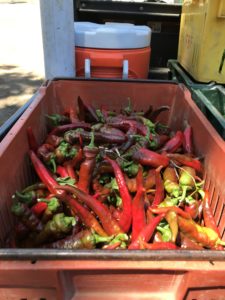
Farmers love talking about the weather. With good reason – it impacts everything that happens here. In that vein: Friday and Saturday marked the first 100+ degree days, a milestone that often happens this time of year. According to the calendar, it’s still technically spring for a few more weeks and the forecast is showing cooler 90 degree days this upcoming week. After a month or two of real summer weather, even the mid 90s can start feeling cool. But it’ll be a while until it’s anything resembling cold again, usually mid October.
The characteristic Capay Valley summer heat, while unfathomably warm at times, enables such amazing melons, tomatoes, and other fruits of summer. It also helps us quickly dry our flowers to make wreaths later in the year.
[Read more…]




